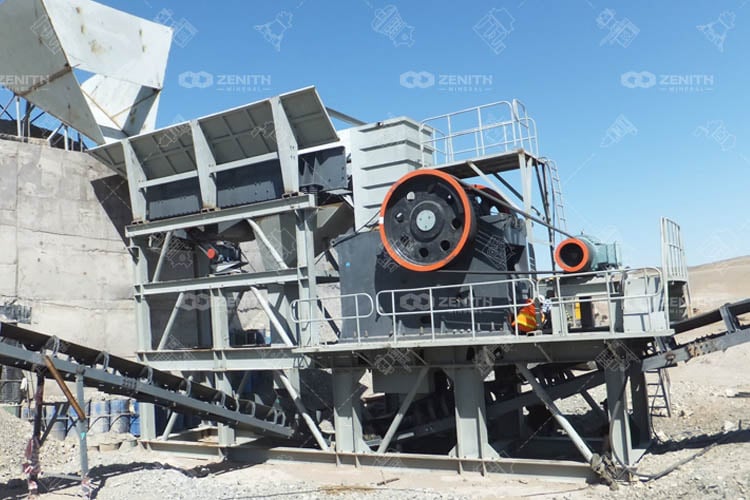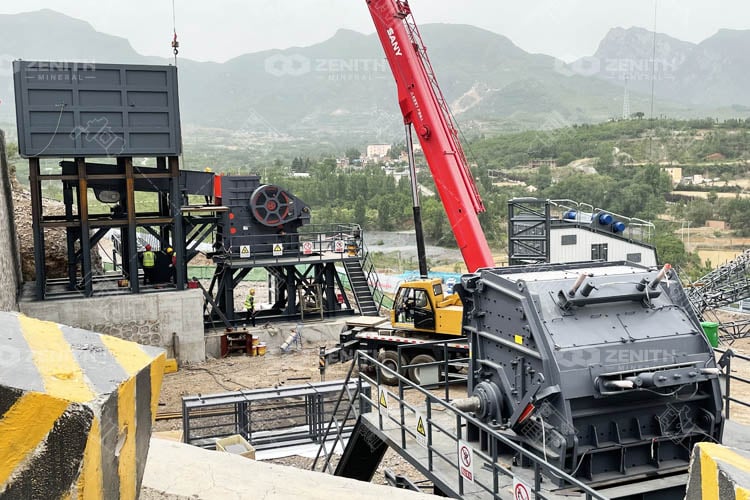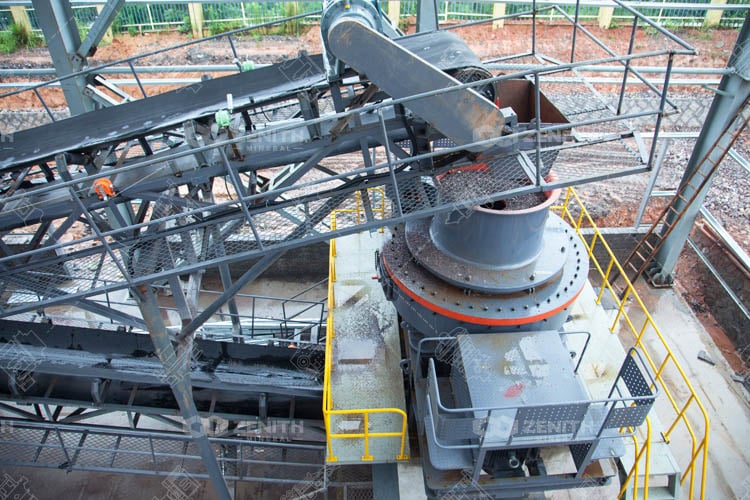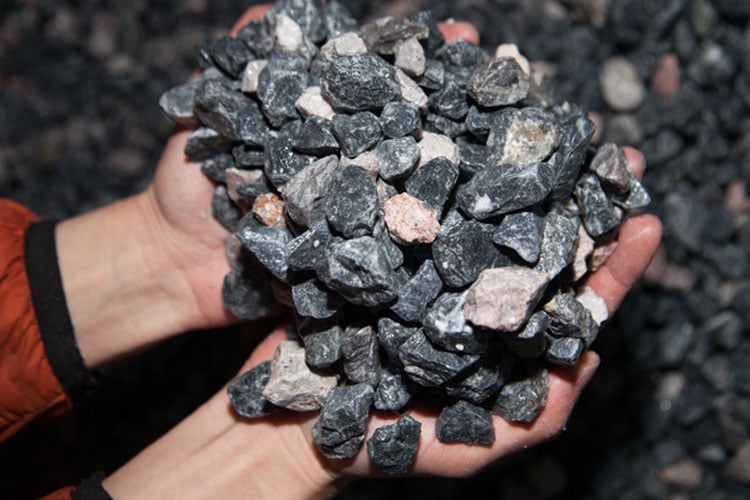What Crusher Machines are Used to Make Aggregates?
The production of aggregates—the crushed stone, sand, and gravel that form the foundation of our built environment—is a precise and multi-stage process. At the heart of this process lies the crushing circuit, a series of machines designed to reduce massive quarry rock into specified, uniform sizes. The selection of crushers represents a critical technical decision that directly determines operational efficiency, product quality, and economic viability in aggregate production.

The Crushing Circuit: A Multi-Stage Strategy
Crushing is rarely accomplished in a single step. A typical aggregate plant employs a minimum of two and often three or four crushing stages to efficiently transform material while controlling costs and product shape.
- Primary Crushing: The first stage, where large quarry-run rock (up to 1-1.5 meters in diameter) is reduced to a manageable size of 150-250 mm.
- Secondary Crushing: Further reduces the primary crushed product to sizes between 20 mm and 100 mm, with a greater focus on improving particle shape.
- Tertiary/Quaternary Crushing: The final stage(s) of size reduction, producing precisely sized end products like base course, chippings, and manufactured sand.
Read Also:What is the Primary, Secondary and Tertiary Crushing?
1. Primary Crushers: The First Line of Attack
The primary crusher must be robust, reliable, and capable of handling large, abrasive, and unpredictable feed material.
A. Jaw Crusher
- Operating Principle: A jaw crusher operates on a simple yet powerful compressive mechanism. It consists of a fixed vertical "jaw" and a moving jaw, forming a "V"-shaped chamber. The moving jaw moves in an elliptical motion, compressing the rock against the fixed jaw until it fractures. The crushed product descends through the narrowing chamber until it is discharged at the bottom.
- Application: The workhorse of primary crushing, ideal for hard, abrasive rocks like granite and basalt. It is known for its simplicity, low operating cost, and ability to handle material with high clay content without clogging.
- Output: Produces a somewhat slabby product, which is why secondary crushing is almost always required to improve shape.

B. Gyratory Crusher
- Operating Principle: Similar to a jaw crusher in that it uses compression, but the design is different. It features a long, spindle-shaped mantle that gyrates within a concave hopper. The mantle gyrates continuously, crushing rock against the concave surfaces. The product is discharged from the bottom.
- Application: Used in high-capacity primary crushing stations, often in large-scale mining and quarrying operations. They are more efficient than jaw crushers in terms of throughput per unit of energy but have a higher initial cost and are not easily relocated.
- Output: Similar to a jaw crusher but typically produces a more consistent product size.
2. Secondary and Tertiary Crushers: Refining Size and Shape
After primary crushing, the focus shifts to further size reduction and, crucially, creating a high-quality, cubical particle shape, which is essential for strong concrete and stable asphalt.
A. Cone Crusher
- Operating Principle: A cone crusher operates on the same compression principle as primary crushers but is designed for finer applications. Rock is fed into a chamber where it is compressed and crushed between a rotating mantle and a stationary concave liner (bowl liner). The space between the mantle and concave, known as the closed-side setting (CSS), precisely controls the output size.
- Application: The dominant crusher in secondary and tertiary roles. Modern cone crushers come in various configurations:
- Standard Cone: For secondary crushing.
- Short Head Cone: For tertiary/quaternary crushing, producing finer products.
- Advantages: Excellent for hard, abrasive rock. Provides precise control over product size and produces a good-quality, cubical product with a low percentage of elongated pieces.

B. Impact Crusher
- Operating Principle: This crusher uses impact force rather than compression. Material is fed into a chamber containing a high-speed rotor equipped with hammers or blow bars. The rotor flings the rock against impact aprons or curtains (anvils), causing it to shatter. The product size is controlled by the speed of the rotor and the gap between the blow bars and the aprons.
- Application: Ideal for softer, less abrasive rocks like limestone. It is the preferred choice for recycling concrete and asphalt. Its key advantage is its ability to produce the most cubical product of any crusher type.
- Disadvantages: Higher wear cost on blow bars and aprons when processing hard, abrasive rock compared to cone crushers.

3. The Specialists: Crushers for Sand and Final Shaping
For the final stage of producing high-quality manufactured sand (M-Sand) or shaping aggregates to perfect cubicity, specialized crushers are employed.
Vertical Shaft Impactor (VSI)
- Operating Principle: A type of impact crusher where the rotor is oriented vertically. Rock is fed into the center of the rotor and is accelerated outward by the rotor's speed. The rock then either impacts a stationary anvil ring (in "rock-on-rock" configurations) or other rocks in the crushing chamber, breaking along natural fissures.
- Application: Primarily used in the tertiary or quaternary stage for:
- Producing Manufactured Sand: It is the best machine for creating cubical, well-graded sand that meets strict specifications for concrete.
- Particle Shape Correction: It can "shape" particles from other crushers, improving cubicity and removing weak, flaky material.
- Beneficiation: Crushing brittle, worthless gravel to liberate valuable, sound aggregate.

Choosing the Right Crusher
The selection of a crusher is a critical economic and technical decision. Here is a simplified guide:
| Crusher Type |
Primary Use |
Crushing Mechanism |
Ideal Rock Type |
Key Product Characteristic |
| Jaw Crusher |
Primary |
Compression |
Hard, Abrasive |
Slabby, requires secondary crushing |
| Gyratory Crusher |
Primary |
Compression |
Hard, Abrasive |
Consistent, for high-tonnage operations |
| Cone Crusher |
Secondary/Tertiary |
Compression |
Hard, Abrasive |
Cubical, well-controlled size |
| Impact Crusher |
Secondary/Tertiary |
Impact |
Soft to Medium, Recycling |
Highly Cubical |
| Vertical Shaft Impactor (VSI) |
Tertiary/Sand Making |
Impact (Rock-on-Rock) |
Any |
Perfectly Cubical Sand & Chips |
A modern aggregate plant is a symphony of crushing technology, where each machine—from the rugged jaw crusher handling the initial brute-force reduction to the precise VSI crafting perfect sand grains—plays an indispensable role. The optimal crushing circuit is a carefully engineered system designed to maximize yield, product quality, and operational efficiency for a specific deposit and market demand.







